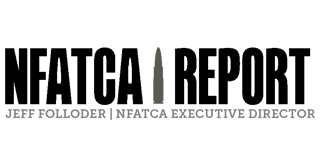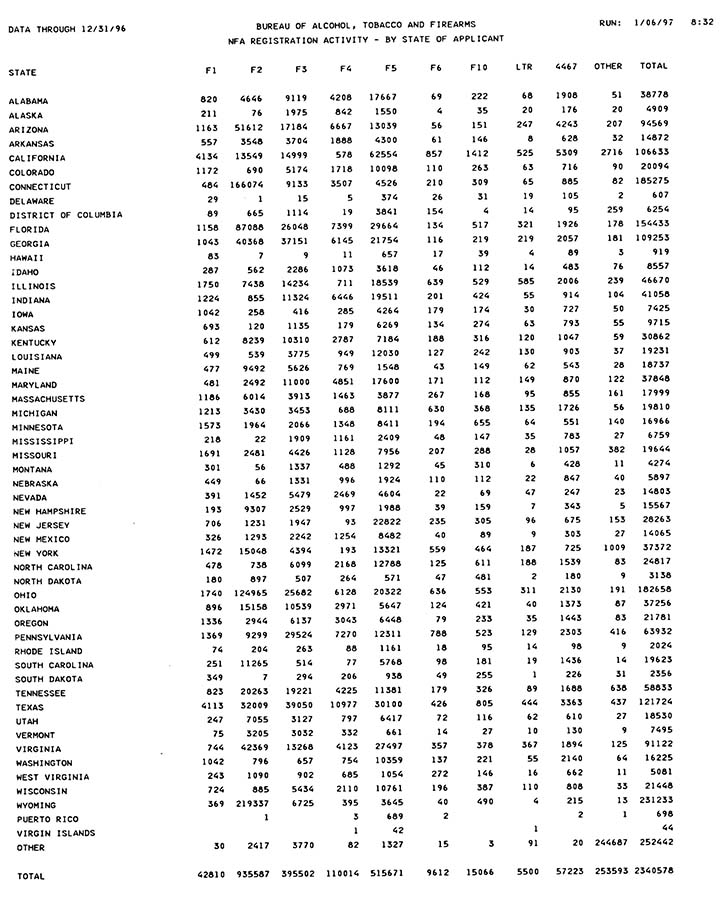JEFF FOLLODER | NFATCA EXECUTIVE DIRECTOR
You will be reading this edition of Small Arms Review just a few months after the close of the industry event known as SHOT Show. A recap of the frenzied week is in order. First up is attendance. While the traffic load did seem a good bit lighter than previous years, we do not have official results in hand. Attendance at the SHOT Show is restricted to the shooting, hunting and outdoor trade and commercial buyers and sellers of military, law enforcement and tactical products and services ONLY. The show is not open to the public. That absolutely puts a planned damper on the size of the crowd (and the rules are now strictly enforced), which is most certainly appreciated by the exhibitors. SHOT is for connecting with business, not the end consumer. SHOT is also for meetings and workflow. It is a rare opportunity for the entire industry to be in one place at the same time, and that is a recognized feature and benefit.
In most previous iterations of SHOT Show, the NFATCA has had the opportunity to meet with a cadre of senior staff members from the Bureau of Alcohol, Tobacco, Firearms and Explosives (ATF). It has been convenient and productive to do so. Unfortunately, political wrangling and posturing during the Federal budget process resulted in government shutdowns that eliminated the joint meetings between NFATCA and ATF in 2018 and 2019. 2020 changed that dearth of face-to-face interaction. There was no government shutdown, and our allocated meeting went off on schedule. Frankly, the meeting was so productive that we were given “7 minutes of bonus time” in order to attempt to cover 3 years of meetings in just one go. There was a lot on the plate!
At the top of our agenda were NFA forms processing times. ATF is aware of the backlog of forms that are in excess of 1 year old and are diligently bringing resources to bear in an effort dubbed “no form left behind.” There is no estimate as to when the older backlog will be completely cleared. However, there is good news. Even though the NFA Division is processing some 10,000 forms per week, current tax-paid submissions are being cleared in 5 to 6 months (with some going even faster), and a new process that bundles multiple submissions from the same entity is being developed. Interestingly, the mix of types of submissions has remained rather stable with individual submissions at 55% of the total and trusts/other at 45%. ATF was clear to point out that trusts/other take longer. There are usually more background checks to conduct, and the legal validity of the entities must be verified. Poorly constructed entities result in incomplete or invalid submissions and take more time. FBI remains an ongoing issue in the process. If an FBI review is delayed, it can take as much as an additional 88 days to locate disposition information, research state laws, etc. Things are getting better, just not fast enough for the NFA community! As an aside, the addition of the electronic version of Form 4 to the eForms system is still in development with no firm delivery date given. Beta testing is ongoing.
We also discussed the debut of a “new” variant of NFA weapons: Firearms that maintain multiple NFA attributes at the same time. NFATCA provided examples of these new weapons (some from older weapon designs, others from new offerings on display at SHOT) and described the manner in which they were attempting to be registered after manufacture, the flaws in the current registration scheme and the difficulties surrounding subsequent transfers to end customers. ATF seemed genuinely surprised by the development and pledged to work with us to create ways to address the developments.
One of the most useful items available through ATF is the ATF National Firearms Act Handbook. This reference book was originally written by NFATCA and presented to the community quite some time ago. NFATCA turned over the “custody” of the guide to ATF, and very few updates have been made. NFATCA and ATF discussed the urgent need for an update to the current edition of the handbook and offered to assist in such an effort. ATF did, in fact, acknowledge the need for an update. Unfortunately, with current Department of Justice restrictions on providing industry guidance (a topic that will require an entire column of its own), there is no real possibility of an update on the near-term horizon.
We discussed several other issues, but space is limited, and we will revisit those in a future column. The NFATCA is always striving to make progress in our ongoing relationships with regulatory authorities. And while we are acutely aware that the NFA community wants that progress right now, the truth is that progress is akin to watching dry paint fade. It takes time. Please help us continue the efforts! Sign up or renew your membership today at nfatca.org/join.htm.
| This article first appeared in Small Arms Review V24N5 (May 2020) |












